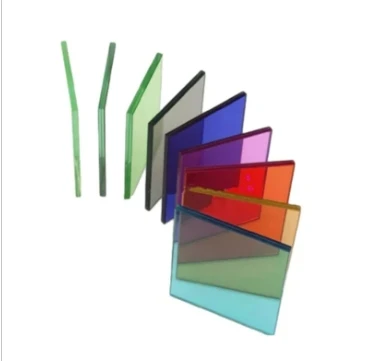Dec . 11, 2024 12:24 Back to list
heat reflective glass windows
The Benefits of Heat Reflective Glass Windows
In recent years, energy efficiency has taken center stage in both residential and commercial construction. One of the most innovative materials contributing to this trend is heat reflective glass. This type of glass has been designed to reflect a significant amount of solar radiation while allowing natural light to enter a building. The following discusses the advantages, functionality, and applications of heat reflective glass windows.
Understanding Heat Reflective Glass
Heat reflective glass is typically coated with a thin layer of metal oxides or other reflective materials. These coatings can be applied to one or more surfaces of the glass, allowing it to reflect infrared radiation, which is responsible for a large portion of heat gain from sunlight. The result is a product that not only maintains aesthetic appeal but also enhances energy efficiency.
Energy Efficiency
One of the primary benefits of heat reflective glass is its ability to reduce energy costs. Traditionally, buildings experience significant heat gain during the hotter months, leading to reliance on air conditioning systems to maintain comfortable indoor temperatures. With heat reflective glass, less heat enters a building, which can lower the demand for cooling. This translates to reduced energy consumption, leading to lower utility bills and a decreased carbon footprint.
Enhanced Comfort
Comfort within a building is paramount. Heat reflective glass windows can contribute significantly to thermal comfort. In the summer, they help keep indoor spaces cooler by minimizing heat gain, which is particularly beneficial in climates with long, hot summers. Conversely, in cooler months, reflective glass can help retain heat inside, creating a more stable and comfortable environment year-round.
UV Protection
heat reflective glass windows

Another vital feature of heat reflective glass is its ability to filter out harmful ultraviolet (UV) rays. Prolonged exposure to UV light can damage interior furnishings, flooring, and artworks, leading to fading and deterioration. Heat reflective glass can significantly reduce UV exposure by up to 99%, thereby prolonging the life of valuable possessions while maintaining the quality of natural light within the space.
Environmental Impact
The use of heat reflective glass windows aligns with sustainable building practices. By reducing energy consumption, buildings become less reliant on fossil fuels, lowering greenhouse gas emissions. Moreover, manufacturing advancements in glass technology have made it possible to produce heat reflective glass with a much smaller environmental footprint than traditional glass options. Choosing sustainable materials not only contributes to individual building efficiency but also fosters a broader commitment to environmental stewardship.
Aesthetic Appeal
In addition to its functional benefits, heat reflective glass can enhance the aesthetic appeal of a building. The variety of finishes and colors available allows architects and designers to create sleek, modern façades that fit seamlessly into a wide range of architectural styles. This combination of functionality and beauty is particularly attractive to both homeowners and commercial property developers.
Applications
Heat reflective glass is suitable for a multitude of applications, including residential homes, office buildings, retail spaces, and industrial facilities. From large glass curtain walls in skyscrapers to energy-efficient windows in single-family homes, the versatility of this glass type makes it an excellent choice for various construction projects. Additionally, as building codes continue to evolve towards stricter energy efficiency standards, the adoption of heat reflective glass is expected to grow.
Conclusion
In conclusion, heat reflective glass windows represent a significant advancement in building technology. With the benefits of energy efficiency, enhanced comfort, UV protection, and aesthetic appeal, it is clear why this glass option is gaining popularity among builders, architects, and homeowners alike. As we continue to prioritize sustainability and energy conservation, heat reflective glass will undoubtedly play a crucial role in shaping the future of construction and design. Embracing this innovative material can help create spaces that are not only beautiful and comfortable but also environmentally responsible.
-
Safety and Style with Premium Laminated Glass Solutions
NewsJun.24,2025
-
Reinvents Security with Premium Wired Glass
NewsJun.24,2025
-
Premium Float Glass Line for Modern Architecture
NewsJun.24,2025
-
Low Emissivity Glass for Energy-Efficient Architecture
NewsJun.24,2025
-
High-Performance Insulated Glass Solutions for Modern Architecture
NewsJun.24,2025
-
Elevates Interior Style with Premium Silver Mirror
NewsJun.24,2025
Related PRODUCTS














